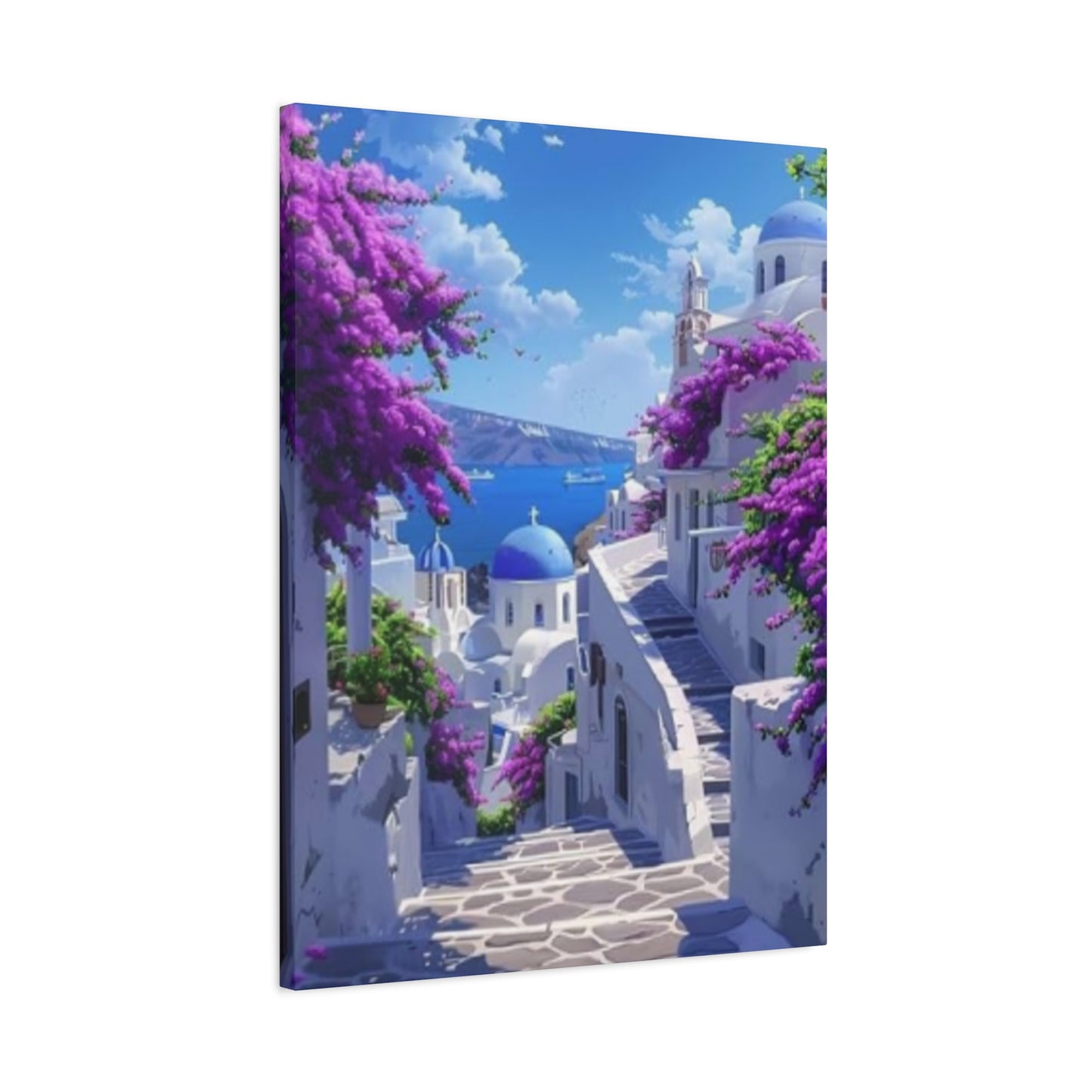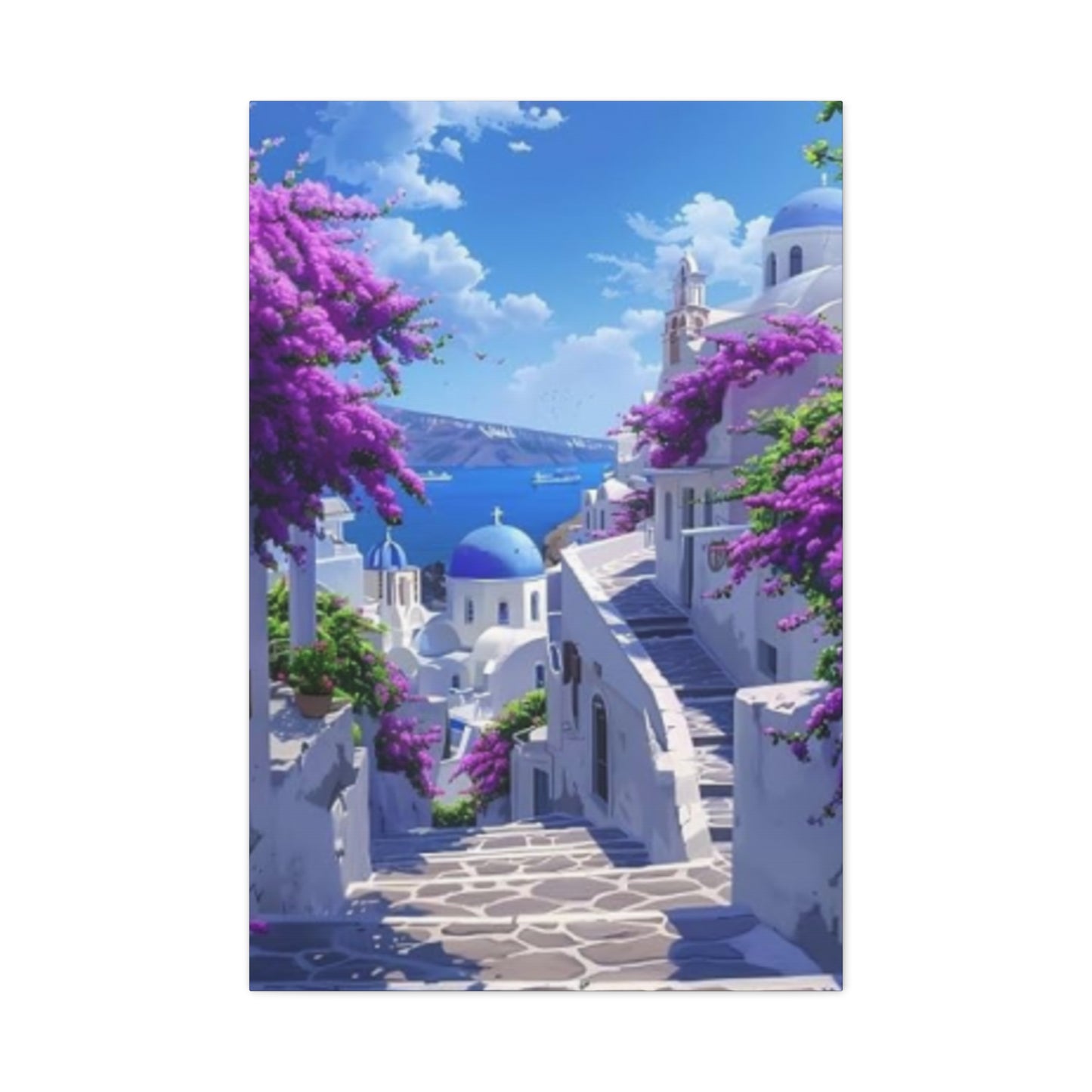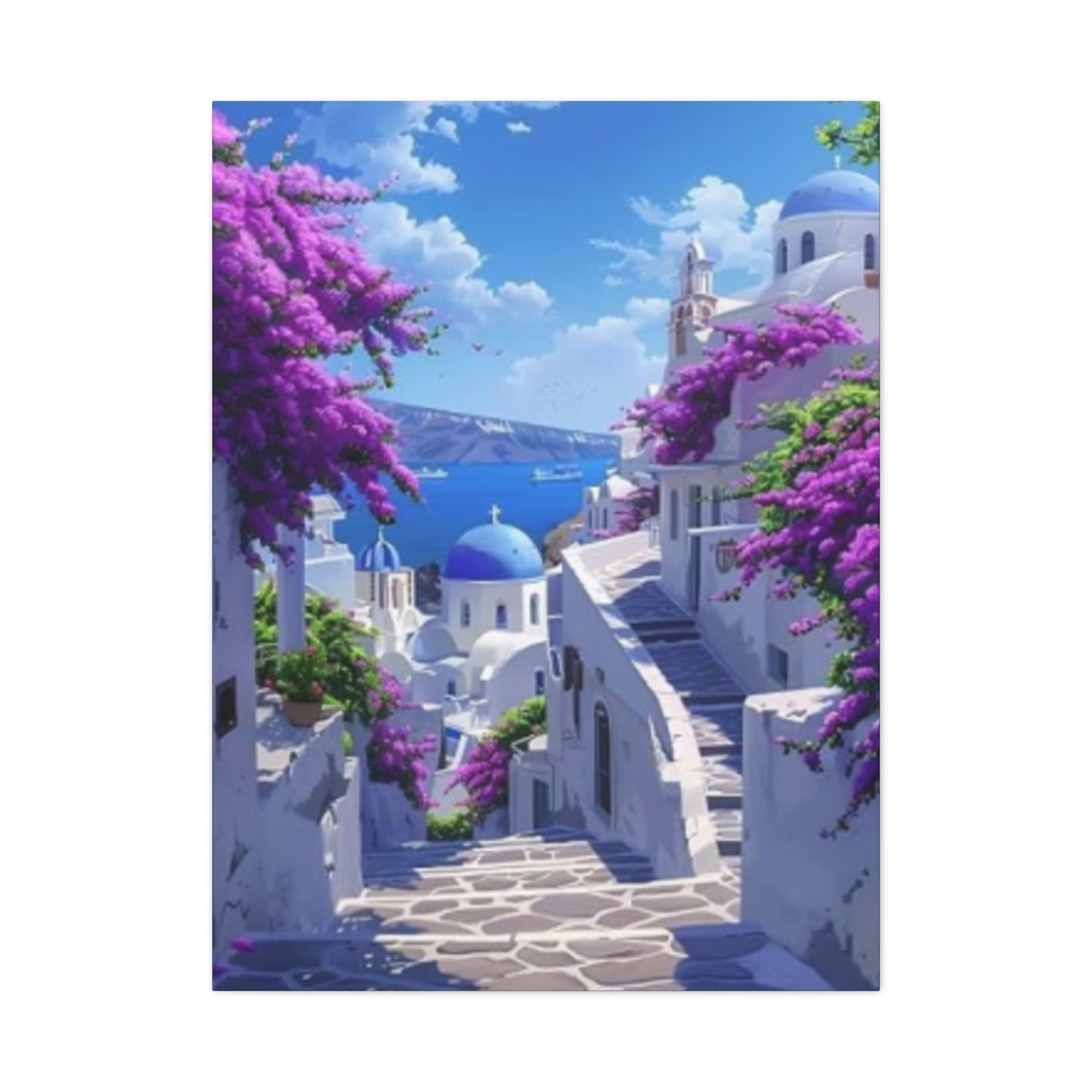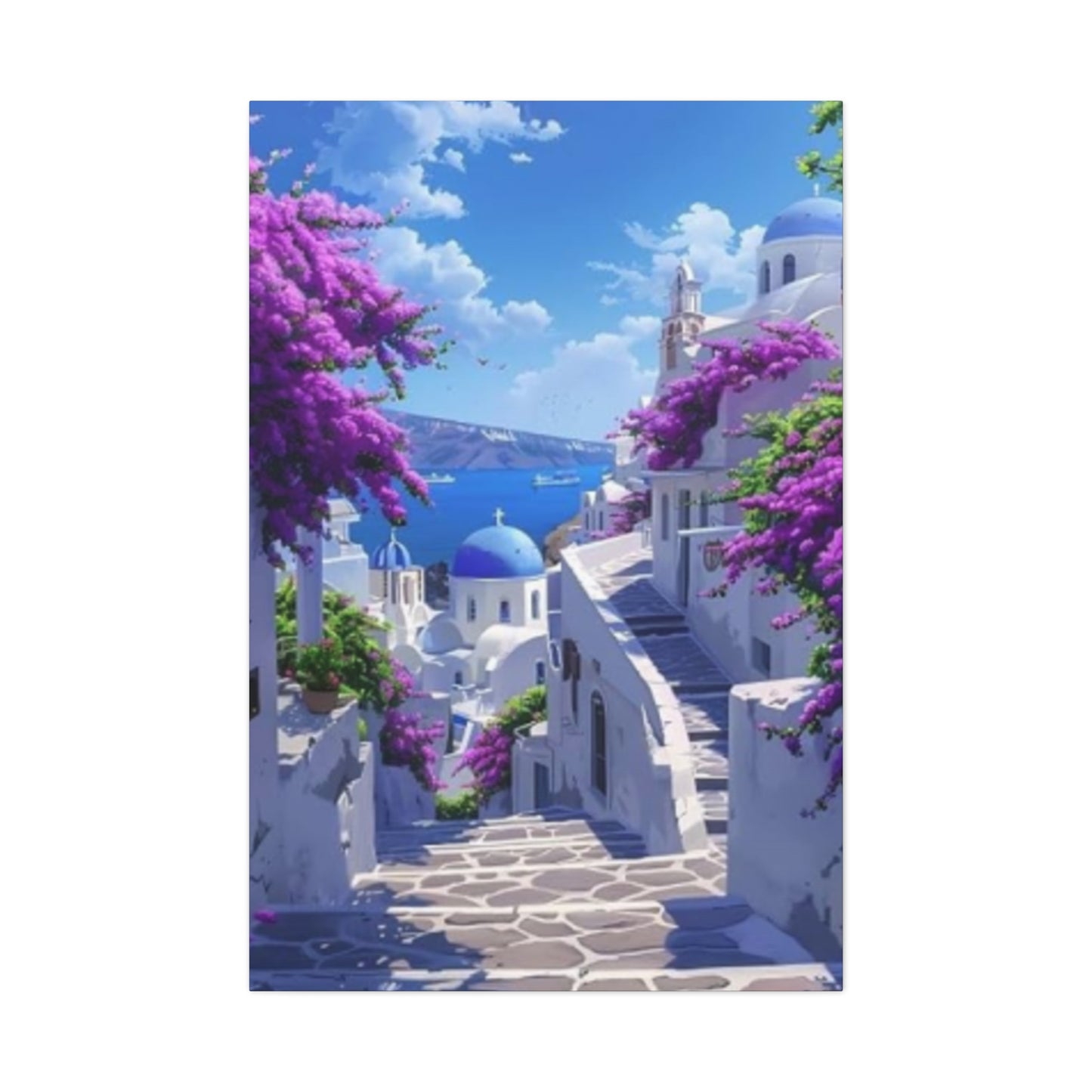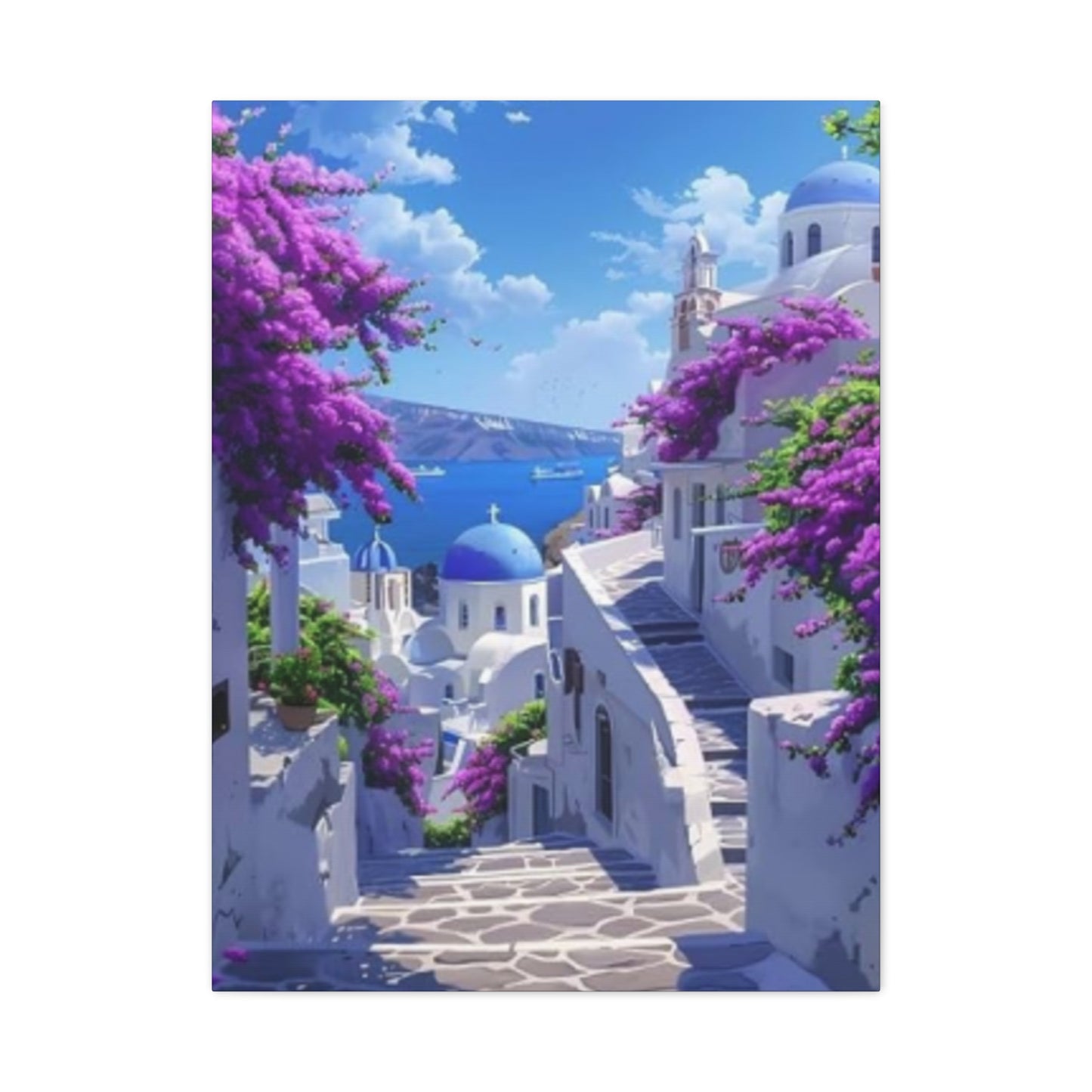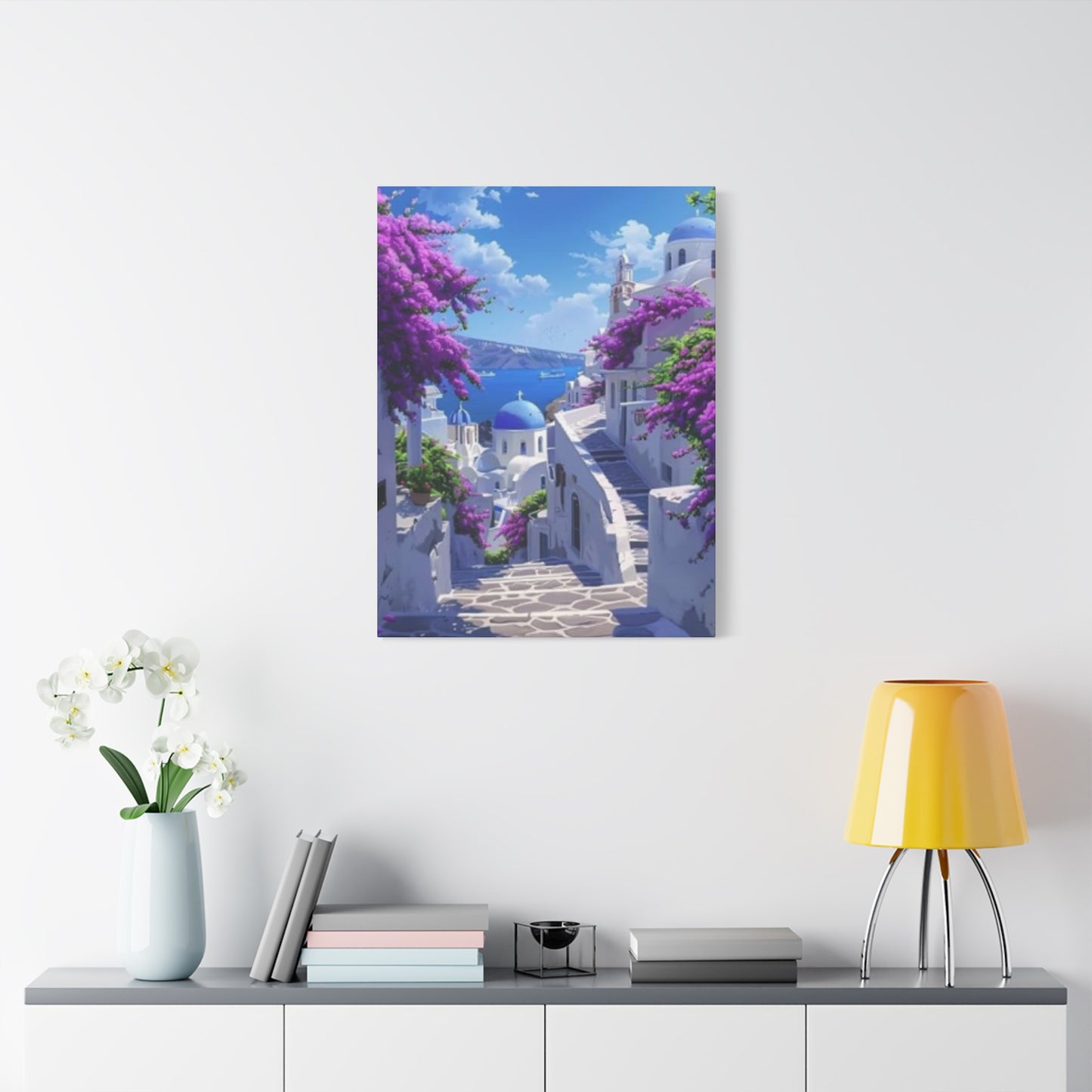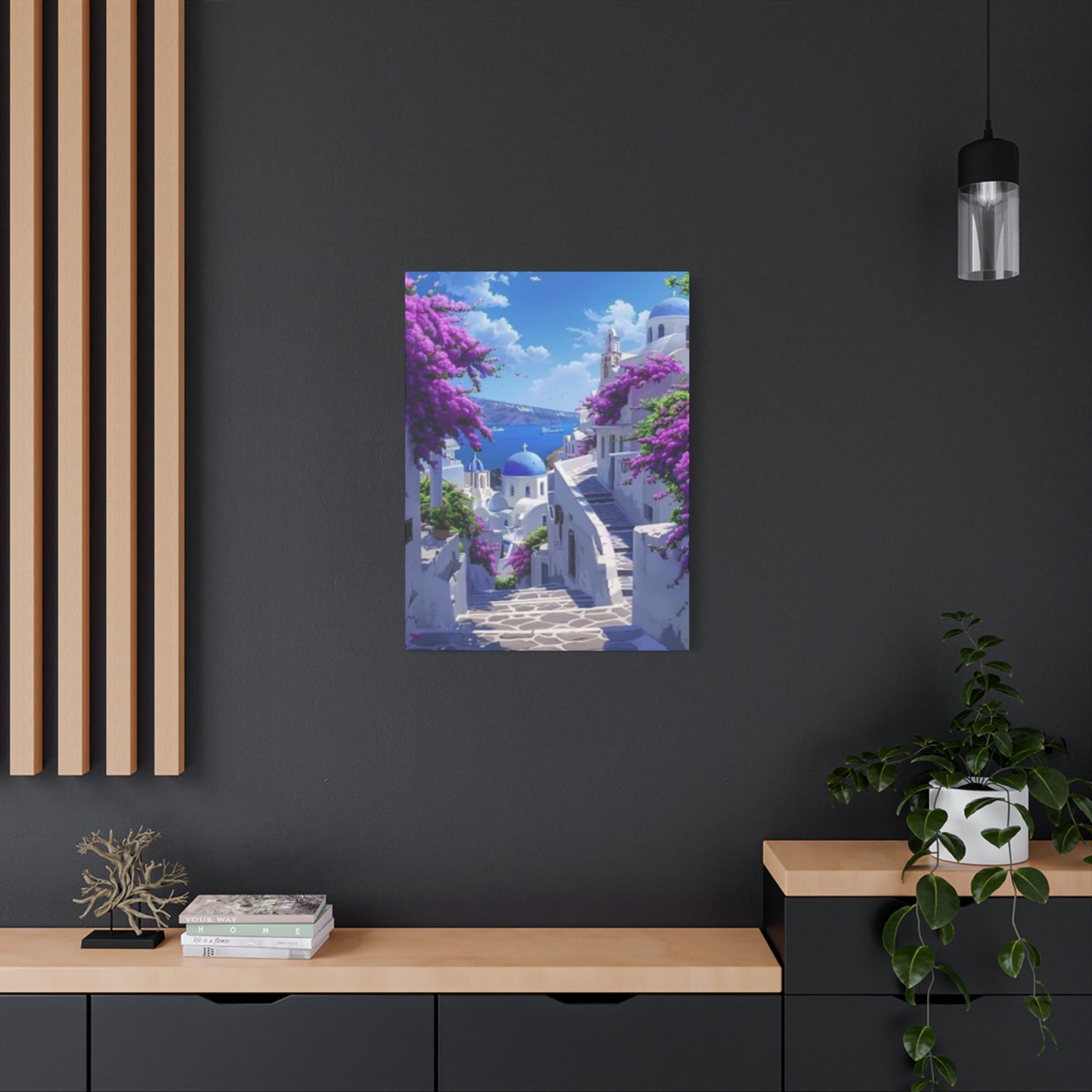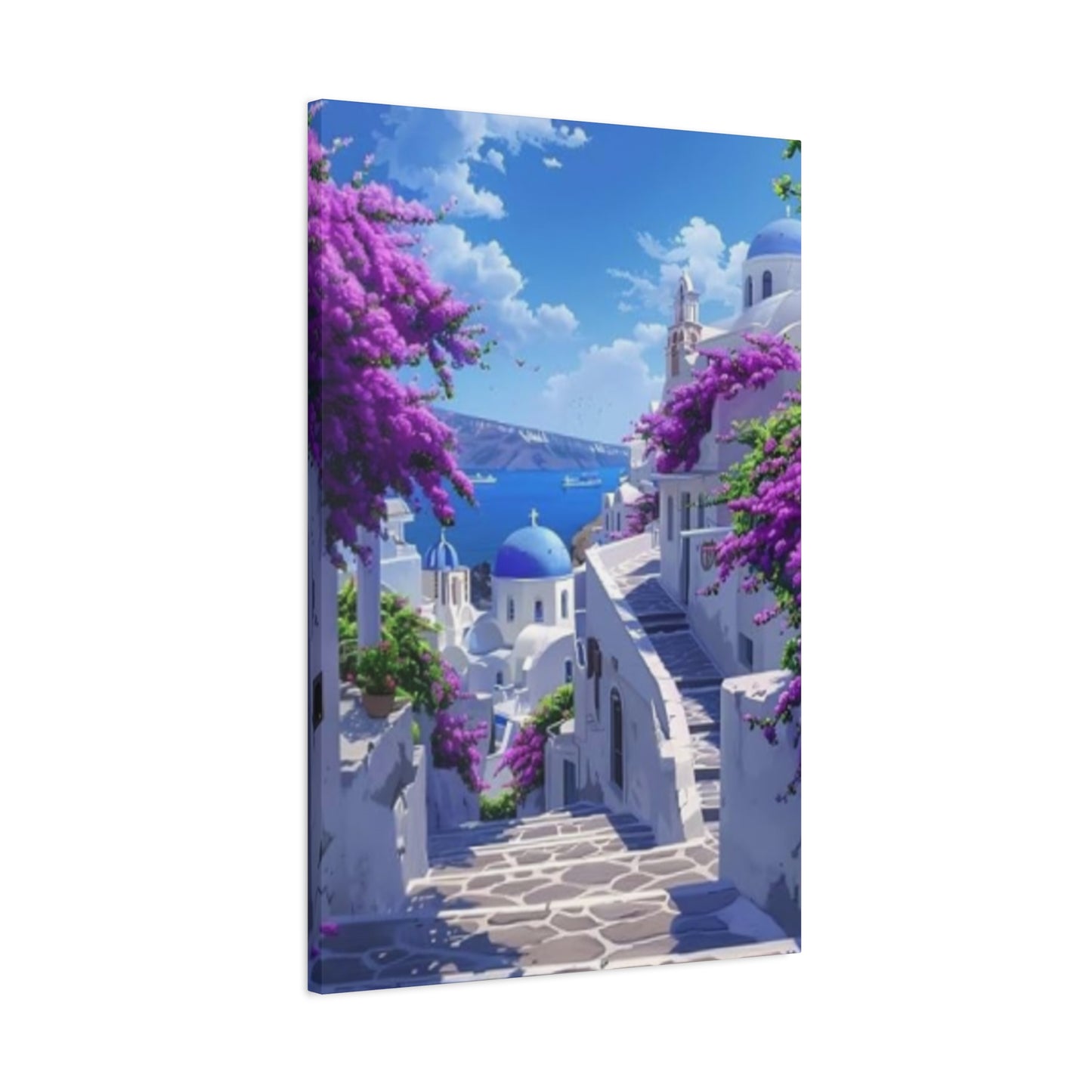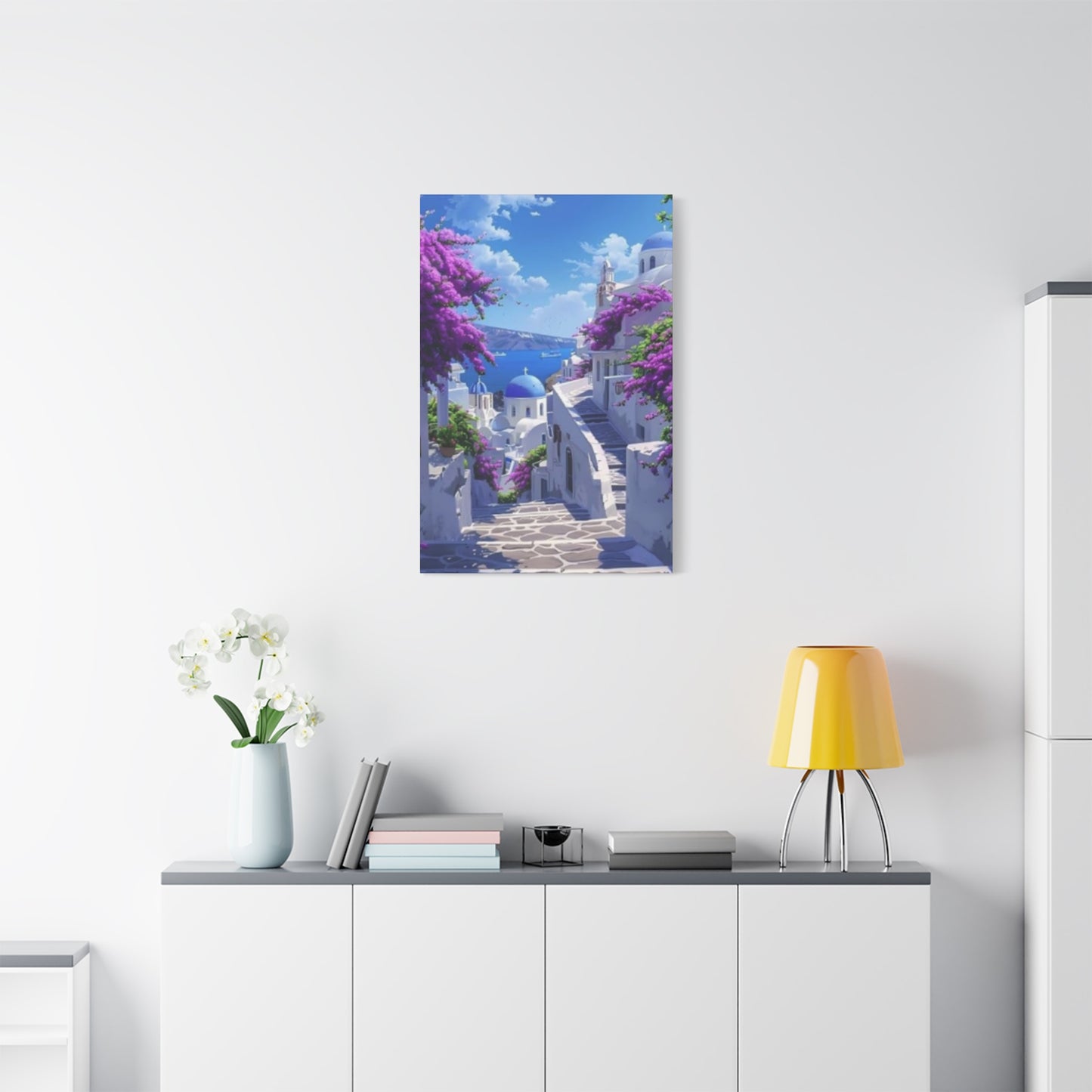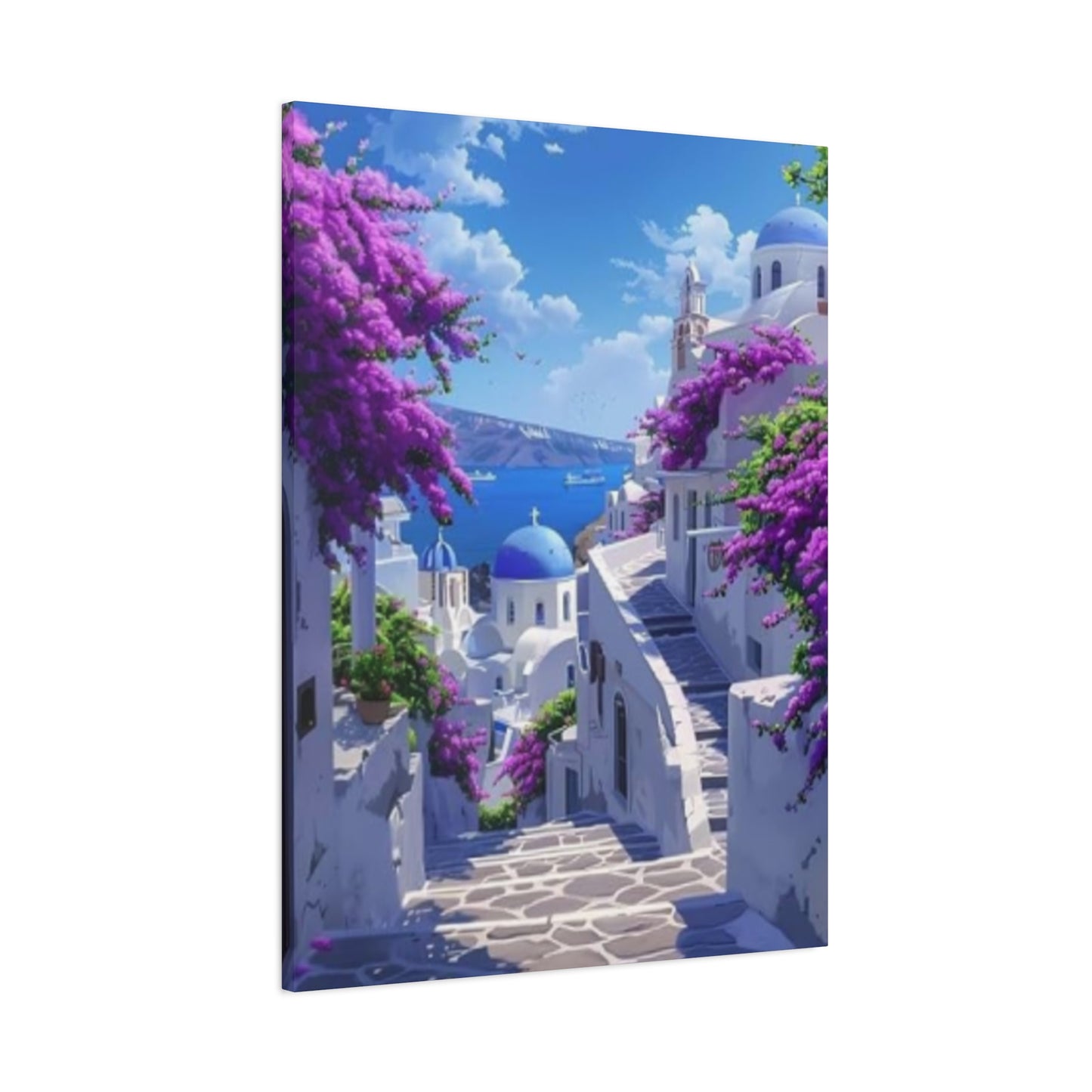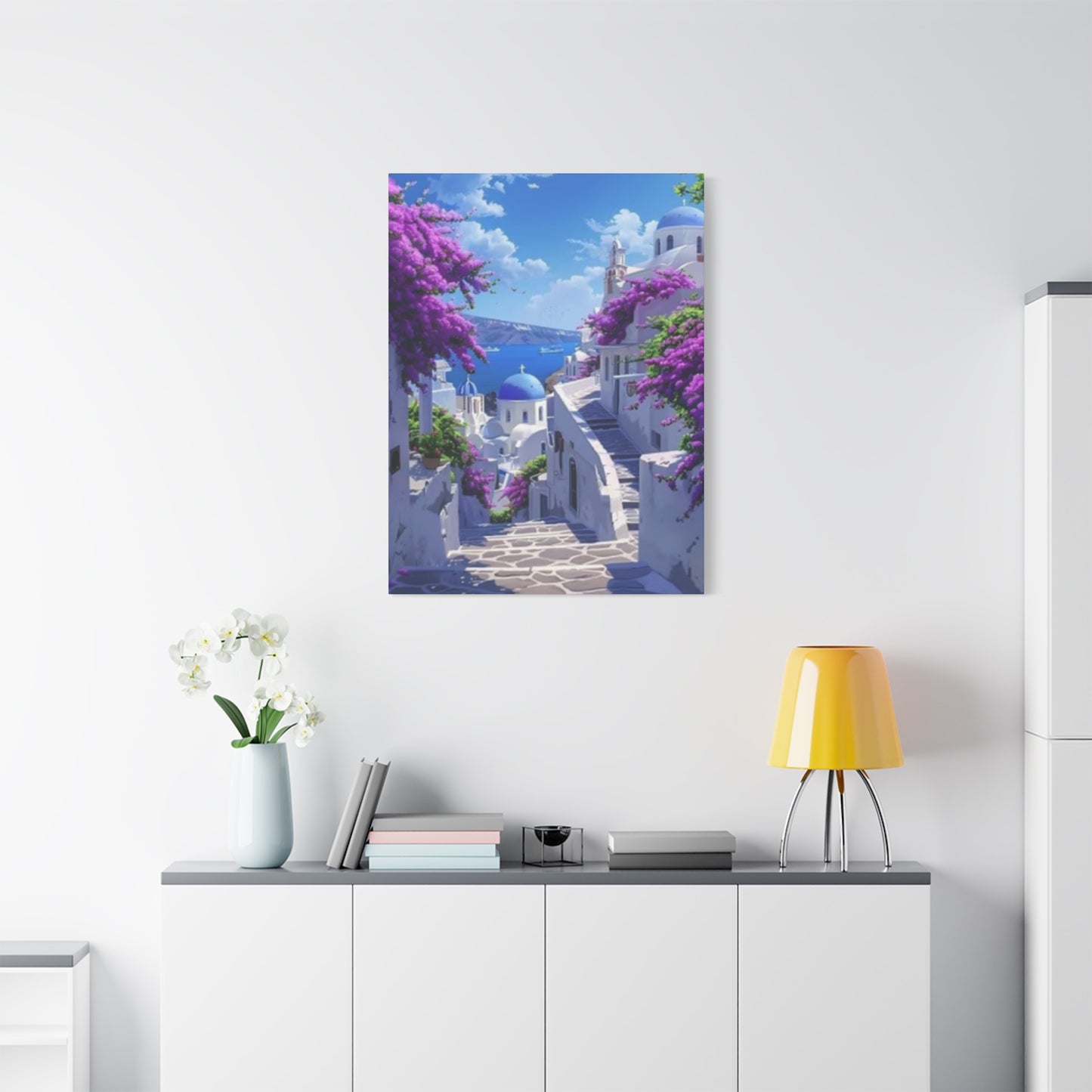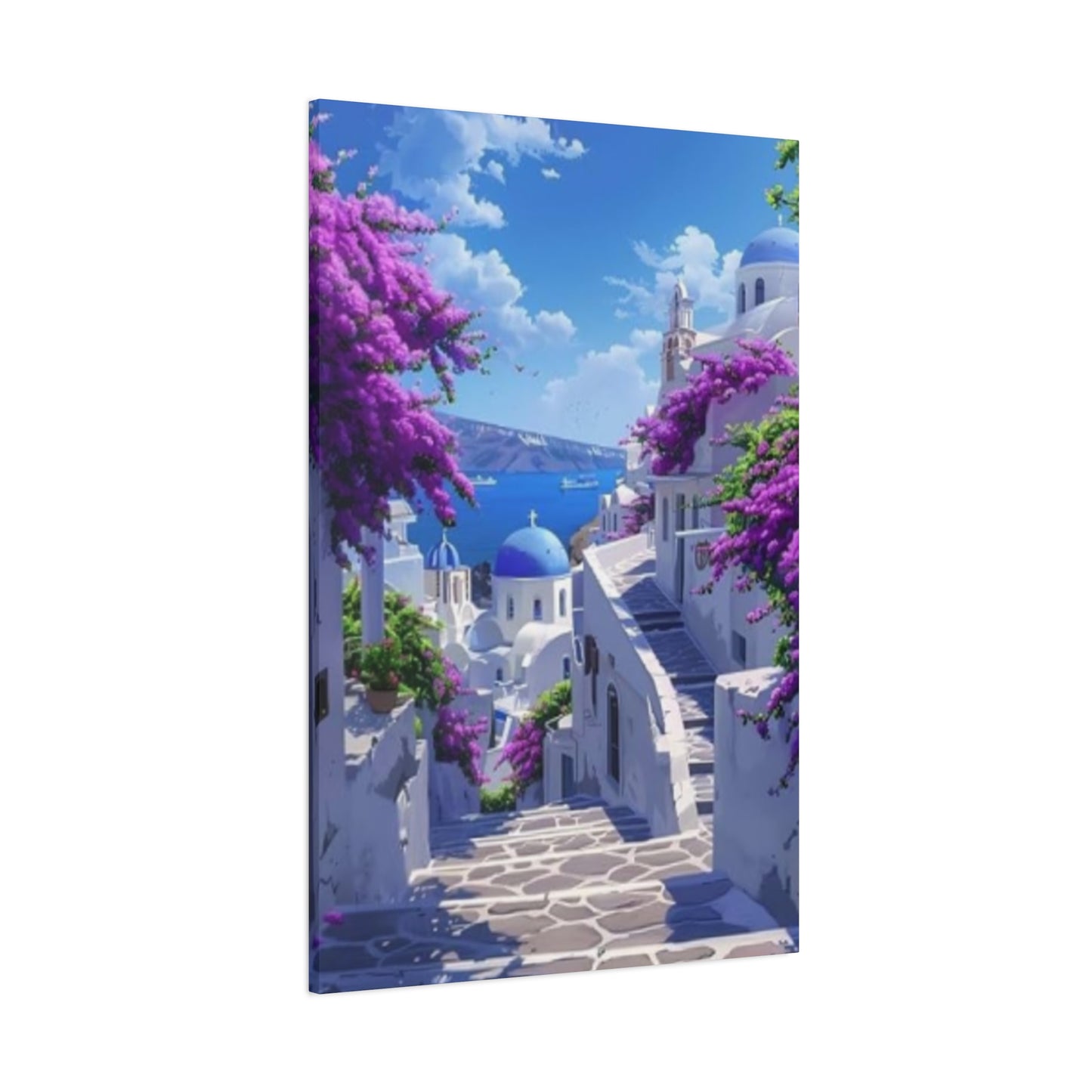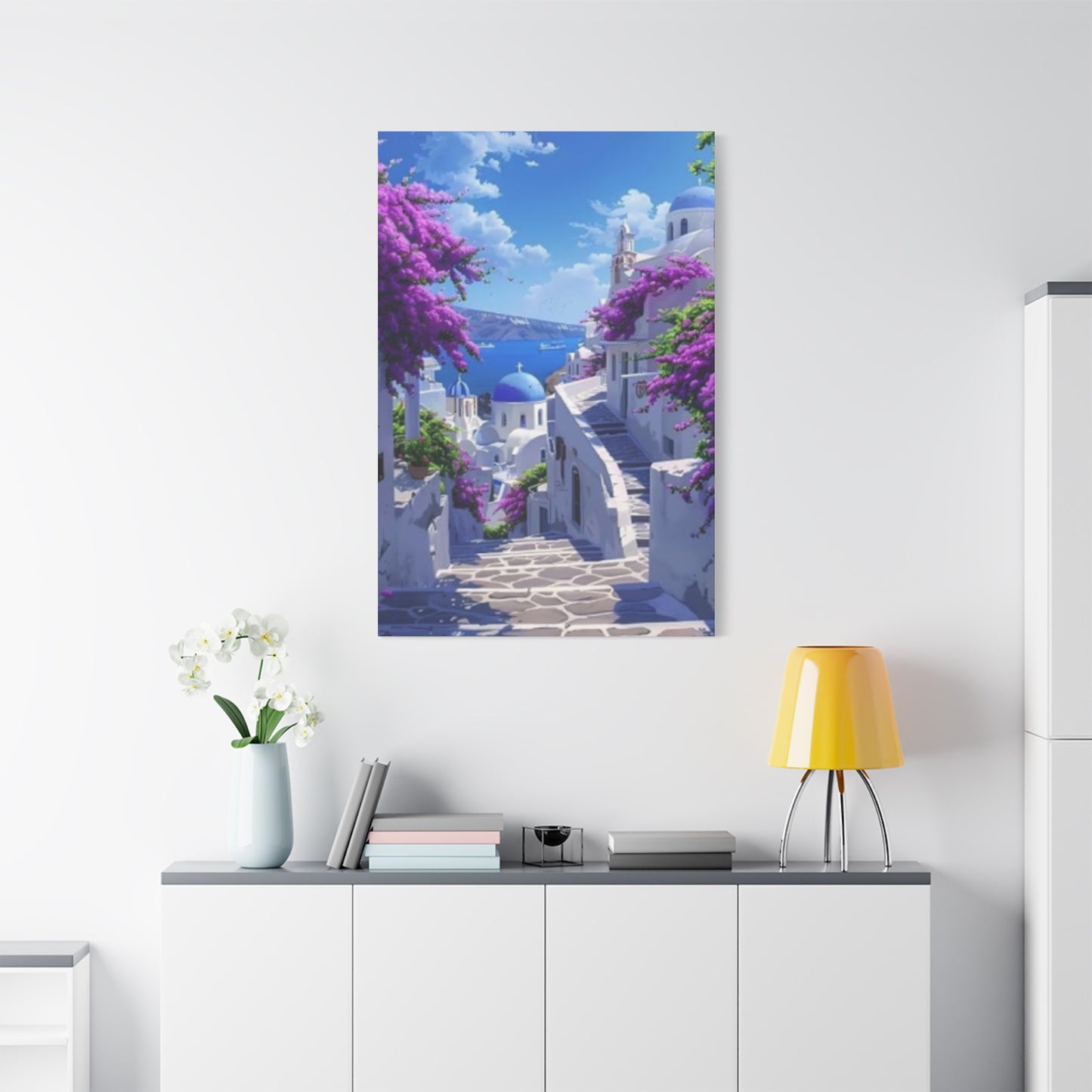Greece Blossom Wall Art: Transform Your Home with Mediterranean Floral Beauty
The enchanting beauty of Greek blossoms has captured hearts for centuries, and now this timeless charm can grace your home through stunning wall art. From the delicate pink petals of almond trees to the vibrant blooms that carpet the Mediterranean landscape, Greece blossom wall art offers a unique way to bring natural elegance and cultural richness into your living environment. These artistic representations celebrate the profound connection between nature and human emotion, transforming ordinary rooms into extraordinary sanctuaries of beauty and tranquility.
Greek blossom artwork represents more than mere decoration; it embodies a philosophy of life that values beauty, harmony, and the cyclical nature of existence. The tradition of depicting flowering trees and plants in art dates back to ancient Greek civilization, where blossoms symbolized renewal, hope, and the eternal cycle of life and death. Today, modern homeowners and art enthusiasts are rediscovering the power of these botanical masterpieces to create atmospheres that inspire, comfort, and rejuvenate.
The Mediterranean climate of Greece produces some of the world's most spectacular flowering displays, from the famous cherry blossoms of spring to the olive tree flowers that herald the harvest season. Artists have long been drawn to capture these fleeting moments of natural splendor, creating works that preserve the ephemeral beauty of blossoming trees and flowering plants. Whether rendered in watercolor, oil, acrylic, or digital media, these artworks serve as windows into the sun-drenched landscapes of Greece.
Contemporary Greece blossom wall art encompasses a wide range of styles, from photorealistic representations that showcase every detail of petal and leaf to impressionistic interpretations that capture the essence and emotion of flowering landscapes. The versatility of this art form means that homeowners can find pieces that complement any decorating style, from minimalist modern to traditional Mediterranean, from rustic farmhouse to sophisticated contemporary.
The psychological benefits of incorporating floral artwork into home environments have been extensively studied by researchers and design professionals. Greece blossom wall art, with its associations of warmth, growth, and natural beauty, can significantly impact mood and well-being. The soft colors typically found in blossom imagery – pinks, whites, pale yellows, and gentle greens – have been shown to promote relaxation and reduce stress levels. Additionally, the organic forms and natural patterns found in floral art can help counterbalance the geometric lines and artificial materials that dominate modern architecture and furnishing.
Selecting the right Greece blossom wall art for your home involves considering multiple factors, including room size, existing color palette, lighting conditions, and personal preferences. Large-scale pieces can serve as dramatic focal points, while smaller works might be grouped together to create intimate gallery walls. The key is to choose artwork that resonates with your personal aesthetic while enhancing the overall design of your living environment.
The authenticity of Greece blossom wall art adds another layer of meaning to these decorative pieces. Many contemporary artists travel to Greece to capture the unique quality of light, color, and atmosphere that characterizes the Mediterranean landscape. This direct connection to place and experience infuses the artwork with genuine cultural and geographical significance, making each piece a small window into the natural beauty of Greece.
Illuminating Your Environment with Greek Botanical Artwork
The transformative power of Greek blossom artwork lies in its ability to brighten and energize living areas through the strategic use of color, light, and natural imagery. Greek blossoms, with their delicate hues and organic forms, possess an inherent luminosity that can dramatically alter the perceived brightness and warmth of a room. The pale pinks of almond blossoms, the pristine whites of orange tree flowers, and the subtle yellows of lemon blooms all contribute to creating an atmosphere of freshness and vitality.
When considering how to brighten a room with Greek blossom art, it's essential to understand the relationship between color temperature and emotional response. The warm undertones found in many Greek blossom paintings – those subtle hints of gold and coral that reflect the Mediterranean sun – can make a room feel more inviting and comfortable. These warm colors work particularly well in north-facing rooms or areas with limited natural light, where they can compensate for the cooler ambient lighting conditions.
The placement of blossom artwork within a room significantly affects its brightening impact. Positioning pieces across from windows or light sources can create a sense of reflected light, while placing artwork at eye level ensures maximum visual impact. Large canvas prints of Greek blossoms can serve as light-reflecting surfaces, bouncing ambient light throughout the room and creating a sense of expanded visual boundaries.
Greek blossom art's ability to brighten environments extends beyond mere color considerations to include psychological and emotional brightening. The imagery of flowering trees and blooming landscapes triggers associations with spring, renewal, and natural beauty, all of which contribute to improved mood and mental clarity. This emotional brightening can be particularly beneficial in areas where people spend significant amounts of time, such as home offices, bedrooms, or family gathering areas.
The technique of layering different tones of blossom imagery can create depth and visual interest while maintaining the brightening effect. For example, combining pale pink almond blossom prints with deeper rose-colored cherry blossom pieces can create a graduated color scheme that draws the eye through the room and creates a sense of movement and flow. This layering technique works especially well in larger rooms where multiple pieces of artwork are needed to create visual balance.
Seasonal considerations also play a role in the brightening potential of Greek blossom art. During darker months, the warm, spring-like imagery of flowering trees can provide a psychological lift and help combat the effects of seasonal affective disorder. The promise of renewal and growth inherent in blossom imagery can serve as a daily reminder of brighter days ahead, making these artworks particularly valuable in creating year-round brightness and optimism.
The reflective qualities of different art mediums can enhance the brightening effect of Greek blossom pieces. Glossy finishes on canvas prints or glass-covered photographs can help bounce light around the room, while matte finishes provide a more subtle, diffused effect. Understanding these technical aspects can help homeowners maximize the brightening potential of their chosen artwork.
Photorealistic Versus Impressionistic Flowering Tree Art
The debate between realistic and abstract approaches to blossom wall art reflects broader discussions in the art world about representation, emotion, and viewer experience. Both styles offer distinct advantages and appeal to different aesthetic preferences, making the choice between them a deeply personal decision that can significantly impact the overall atmosphere of a living environment.
Realistic Greece blossom wall art focuses on accurate representation, capturing the intricate details of petals, leaves, stamens, and bark with photographic precision. These pieces often showcase the technical skill of the artist and provide viewers with an almost tactile experience of the natural world. The hyperrealistic approach allows observers to examine the subtle variations in color and texture that occur in nature, from the delicate veining in individual petals to the rough texture of tree bark. This style appeals to those who appreciate craftsmanship and technical excellence, as well as those who prefer art that closely mimics the natural world.
The advantages of realistic blossom art include its universal appeal and immediate recognition. Viewers can instantly identify the subject matter and connect with the familiar beauty of flowering trees. This accessibility makes realistic blossom art an excellent choice for common areas where multiple people with varying artistic preferences will encounter the work. Additionally, the detailed nature of realistic art can provide endless opportunities for contemplation and discovery, as viewers notice new details with each viewing.
Abstract blossom wall art, on the other hand, emphasizes emotional expression and artistic interpretation over literal representation. These pieces might use bold color combinations, simplified forms, or experimental techniques to convey the essence of blossoming rather than its exact appearance. Abstract approaches allow artists greater freedom to explore color relationships, compositional dynamics, and emotional content, often resulting in more dynamic and emotionally engaging works.
The benefits of abstract blossom art include its ability to complement a wider range of decorating styles and its potential for creating stronger emotional responses. Abstract pieces can serve as conversation starters and allow viewers to bring their own interpretations and experiences to the work. The simplified forms and bold colors often found in abstract blossom art can also make these pieces more suitable for modern and contemporary room designs.
Semi-abstract or impressionistic approaches to blossom art offer a middle ground between realistic and abstract styles. These works maintain recognizable subject matter while allowing for artistic interpretation and emotional expression. Impressionistic blossom paintings might use loose brushwork, broken color, or atmospheric effects to capture the fleeting quality of light on flowering trees, creating works that feel both naturalistic and artistic.
The choice between realistic and abstract blossom art often depends on the intended function of the artwork within the home environment. Realistic pieces work well in formal settings where classical beauty is valued, while abstract works might be preferred in contemporary settings where innovation and personal expression are prioritized. Some homeowners choose to combine both approaches, using realistic and abstract blossom pieces in different rooms or creating gallery walls that showcase the full spectrum of artistic interpretation.
The scale and viewing distance of artwork also influence the effectiveness of realistic versus abstract approaches. Large-scale abstract works can create dramatic impact when viewed from across a room, while smaller realistic pieces might be better appreciated at closer viewing distances where details can be examined and appreciated.
Color harmony considerations may also influence the choice between realistic and abstract blossom art. Realistic pieces are constrained by natural color relationships, while abstract works offer unlimited possibilities for color experimentation and coordination with existing room schemes.
Merging Mediterranean Blooms with Seaside Aesthetics
The natural affinity between Greek blossom art and coastal decorating themes creates opportunities for sophisticated and harmonious room designs that celebrate both terrestrial and marine beauty. The Mediterranean climate that produces Greece's spectacular flowering displays is intimately connected to its coastal environment, making this combination both geographically and aesthetically logical.
Coastal decorating traditionally emphasizes light, airy colors, natural textures, and relaxed atmospheres – qualities that align perfectly with the gentle beauty of blossom imagery. The soft pinks and whites of Greek almond blossoms complement the pale blues and sandy beiges that define coastal color palettes, while the organic forms of flowering trees echo the curved lines of seashells and weathered driftwood.
The key to successfully combining blossom art with coastal decor lies in understanding the shared aesthetic principles that underlie both themes. Both coastal and floral decorating emphasize natural beauty, seasonal change, and the importance of light and color in creating mood. These shared values make it possible to create cohesive designs that feel intentional and well-planned rather than accidentally assembled.
Color coordination plays a crucial role in merging these decorating themes. The pale yellows found in lemon blossoms can echo the warm tones of sunbleached sand, while the soft greens of olive tree foliage complement the muted grays of weathered coastal structures. White blossom imagery provides a perfect bridge between themes, working equally well with both the crisp whites of coastal decorating and the natural variations found in seashell and coral collections.
Textural considerations also support the combination of blossom art and coastal decor. The smooth surfaces of beach glass and polished shells can be complemented by the organic textures implied in blossom paintings, while the rough textures of rope and weathered wood can provide contrast to the delicate beauty of floral imagery. This interplay of smooth and rough, delicate and sturdy, creates visual interest and prevents either theme from becoming overwhelming.
The seasonal nature of both coastal and blossom imagery allows for flexible decorating approaches that can change throughout the year. Spring and early summer displays might emphasize the fresh, new-growth aspects of both themes, with vibrant blossom prints paired with bright coastal accessories. Fall and winter arrangements might focus on the more muted, weathered aspects of coastal living, with subtle blossom imagery providing gentle reminders of warmer seasons.
Scale and proportion considerations are important when combining blossom art with coastal decor. Large-scale blossom prints can serve as focal points in coastal-themed rooms, while smaller pieces might be incorporated into gallery walls that also include coastal photography or marine-themed artwork. The key is to maintain visual balance while allowing each element to contribute to the overall aesthetic narrative.
The psychological effects of combining these themes can be particularly beneficial, as both coastal and floral imagery are associated with relaxation, renewal, and connection to nature. The combination can create environments that feel like peaceful retreats from the stresses of daily life, making them ideal for bedrooms, bathrooms, or reading nooks.
Lighting considerations become especially important when merging these themes, as both coastal and blossom imagery benefit from abundant natural light. Rooms decorated with this combination should maximize available natural light while providing additional illumination that enhances the colors and textures of both decorating elements.
Presentation Methods for Botanical Mediterranean Artwork
The way Greece blossom wall art is framed and presented can dramatically impact its visual effectiveness and longevity, making frame selection a crucial aspect of the overall decorating process. The choice of framing materials, colors, and styles should complement both the artwork itself and the broader decorating scheme while providing adequate protection for valuable pieces.
Traditional framing approaches for blossom art often emphasize natural materials and classic proportions that enhance the organic beauty of the subject matter. Wood frames in natural finishes can echo the botanical themes while providing warmth and texture that complement the soft colors typically found in blossom imagery. Oak, cherry, maple, and pine all offer different grain patterns and color tones that can be selected to coordinate with existing furniture and architectural elements.
The width and profile of frame molding should be proportional to the size and visual weight of the artwork. Delicate watercolor blossom studies might benefit from narrow, refined frames that don't compete with the subtle beauty of the subject matter, while large oil paintings of dramatic flowering landscapes might require more substantial frames that can support their visual impact. The goal is to create a harmonious relationship between artwork and frame that enhances rather than overwhelms.
Metal framing options offer different aesthetic possibilities for Greece blossom art. Brushed silver or gold frames can add elegance and sophistication to formal settings, while black or dark bronze frames can provide contemporary contrast that makes blossom colors appear more vibrant. The key is to ensure that metallic finishes complement rather than clash with the color palette of the artwork and surrounding decor.
Matting considerations can significantly affect the presentation of blossom artwork, particularly for prints and photographs. White or cream mats provide classic, neutral backgrounds that allow artwork colors to take center stage, while colored mats can be used to echo or complement specific colors within the piece. The width of matting should be proportional to the artwork size, with larger pieces typically requiring wider mats to create proper visual balance.
Contemporary framing trends have introduced new possibilities for presenting blossom art, including floating frames that create the illusion that artwork is suspended within the frame, and frameless mounting systems that allow the artwork to appear to float against the wall. These modern approaches can be particularly effective for abstract or contemporary interpretations of blossom themes.
The choice between glass and acrylic glazing affects both the protection and appearance of framed blossom art. Regular glass provides excellent clarity and scratch resistance but can create reflection issues in certain lighting conditions. Anti-reflective glass reduces glare but may slightly affect color perception. Acrylic glazing is lighter and more shatter-resistant than glass, making it a safer choice for high-traffic areas or homes with children.
Conservation framing techniques become important for valuable or irreplaceable blossom artwork. Acid-free mats, UV-filtering glazing, and proper backing materials can significantly extend the life of artwork by protecting it from environmental damage. These conservation measures are particularly important for original artwork or limited-edition prints that may appreciate in value over time.
Custom framing allows for personalized approaches that can address specific decorating challenges or artistic preferences. Professional framers can provide advice on material selection, proportion, and conservation techniques while creating unique solutions that perfectly complement both artwork and room design.
Group framing approaches can be used to create cohesive presentations of multiple blossom pieces. Using identical or coordinated frames for a series of related prints can create a sense of unity, while varying frame styles within a consistent color family can add visual interest while maintaining overall harmony.
Year-Round Beauty of Greek Flowering Artwork
The seasonal characteristics of Greek blossom imagery provide unique decorating opportunities that can be leveraged to create year-round visual interest and emotional connection. Unlike artwork that remains static throughout the seasons, blossom-themed pieces can evoke different feelings and associations as natural seasons change, making them dynamic elements in home decoration.
Spring associations with Greek blossom art are perhaps the most obvious and powerful. The emergence of new buds and flowers after winter's dormancy speaks to universal themes of renewal, hope, and fresh beginnings. During actual spring months, blossom artwork can complement the natural awakening happening outside, creating continuity between indoor and outdoor environments. The fresh, clean colors of spring blossoms – pale pinks, soft whites, and tender greens – align perfectly with traditional spring decorating palettes.
Summer appeal of blossom imagery shifts to emphasize abundance, warmth, and full bloom beauty. Greek summer brings intense light and heat that can intensify the colors and forms of flowering plants, and artwork that captures this intensity can help bring the Mediterranean summer atmosphere indoors. The contrast between delicate blossoms and strong sunlight creates dynamic visual relationships that can energize room environments during the warmest months of the year.
Autumn connections to blossom art might seem counterintuitive, but many Greek flowering plants have second blooming periods or produce decorative seed pods and autumn foliage that can be equally beautiful. Additionally, the memory of spring and summer blossoms can provide comfort and hope during the transition to colder months. Blossom artwork can serve as a bridge between seasons, maintaining connections to natural beauty even as outdoor landscapes become dormant.
Winter presents perhaps the greatest opportunity for blossom art to provide psychological and emotional benefits. During months when natural flowering is minimal or absent, artwork depicting the promise of spring can provide crucial mental and emotional support. The warm colors and organic forms of blossom imagery can counteract the stark geometry and cold colors that often dominate winter landscapes.
The evergreen nature of artwork means that Greece blossom pieces can provide consistent beauty regardless of changing outdoor conditions. This reliability makes them particularly valuable in climates where seasonal depression or cabin fever are common concerns. The ability to maintain visual connections to natural beauty and seasonal optimism can be crucial for mental health and overall well-being.
Cultural seasonal celebrations can be enhanced through thoughtful presentation of blossom artwork. Greek Orthodox Easter, which often coincides with spring blossoming season, provides opportunities to highlight blossom-themed artwork as part of seasonal decorating schemes. Similarly, other spring celebrations and festivals can be supported through temporary or permanent displays of flowering tree imagery.
The photographic documentation of specific blooming seasons in Greece can provide educational and cultural value alongside aesthetic appeal. Viewers can learn about the timing and characteristics of different flowering seasons while enjoying the visual beauty of the artwork. This educational component adds depth and meaning to decorative choices.
Seasonal rotation of blossom artwork can keep room environments fresh and engaging throughout the year. Different pieces might be emphasized during their natural blooming seasons, while others might be stored or moved to less prominent locations. This rotation approach allows collectors to enjoy larger numbers of pieces while keeping individual rooms from becoming overcrowded.
The anticipatory quality of blossom imagery can be used strategically throughout the year. Displaying spring blossom art during late winter can help build anticipation for warmer months, while summer pieces during spring can extend the sense of growing warmth and light. This temporal manipulation can help smooth psychological transitions between seasons.
Substantial Canvas Presentations of Mediterranean Blossoms
Large-scale canvas prints of Greek blossoms represent a significant decorating investment that can transform room environments through sheer visual impact and commanding presence. These substantial pieces serve as focal points that organize and anchor entire decorating schemes while providing opportunities for dramatic artistic statements that reflect personal taste and cultural appreciation.
The production quality of large canvas prints has improved dramatically with advances in digital printing technology, allowing for reproductions that maintain exceptional detail and color accuracy even at substantial sizes. High-resolution scanning and printing processes can capture the subtle gradations and fine details that make blossom imagery so compelling, ensuring that large-scale pieces maintain their visual integrity when viewed at close range.
Scale considerations become crucial when selecting large canvas prints for specific room environments. A piece that appears perfectly proportioned in a gallery or online display might overwhelm a smaller room or compete unsuccessfully with architectural features in a larger area. Understanding the relationship between artwork size and viewing distance helps ensure that large pieces enhance rather than dominate their environments.
The visual weight of large blossom canvases can be used strategically to create balance within room compositions. A substantial piece can anchor a seating area, balance architectural features like fireplaces or large windows, or serve as a counterpoint to major furniture pieces. The key is to consider the overall visual distribution of weight and mass throughout the room.
Installation considerations for large canvas pieces include proper wall support, appropriate hanging systems, and adequate lighting. Professional installation may be advisable for particularly large or valuable pieces, ensuring proper support and optimal positioning. The investment in large-scale artwork justifies careful attention to installation details that protect both artwork and wall surfaces.
The commanding presence of large Greek blossom canvases makes them ideal for creating focal points in open-plan living areas where visual organization is needed to define separate functional zones. A large blossom piece can help establish a living area within an open floor plan or create visual interest in long hallways or large wall expanses.
Color impact becomes amplified in large-scale presentations, making color coordination with existing room elements particularly important. The expanded color field created by a large canvas can significantly influence the perceived color temperature and mood of an entire room. This amplification effect can be used positively to enhance desired atmospheric qualities or can become problematic if color relationships are not carefully considered.
The textural qualities of canvas surfaces add tactile interest to large-scale presentations that might be lost in smaller pieces. The grain and texture of canvas can be appreciated as aesthetic elements in their own right, contributing to the overall sensory experience of the artwork. Different canvas weights and textures can create varying effects, from smooth and refined to rough and artistic.
Lighting large canvas pieces requires careful consideration of both natural and artificial light sources. The size of large pieces means they will interact with multiple light sources throughout the day, potentially creating changing visual effects as light conditions change. Proper lighting design can enhance these natural variations while ensuring the artwork remains visible and attractive under all conditions.
The investment aspect of large canvas prints should be considered in terms of both initial cost and long-term value. High-quality large pieces can appreciate in value while providing years of aesthetic pleasure, making them worthwhile investments for serious collectors. However, the substantial cost also requires careful consideration of placement, protection, and long-term decorating plans.
Optimizing Blossom Artwork for Personal Living Areas
The integration of Greece blossom wall art into living rooms and bedrooms requires careful consideration of the specific functional requirements and atmospheric goals of these important personal areas. These rooms serve as the primary venues for relaxation, entertainment, and intimate personal time, making the selection and placement of artwork crucial for creating desired moods and supporting intended activities.
Living room applications of blossom art must balance the need for visual impact with the practical requirements of social gatherings and family activities. Large-scale pieces can serve as conversation starters and focal points that organize seating arrangements, while smaller groupings might complement entertainment systems or architectural features. The social nature of living rooms suggests artwork selections that have broad appeal and can serve as positive conversation topics.
The color psychology of living room environments supports the use of Greece blossom art with its generally warm and welcoming color palettes. The soft pinks, gentle whites, and natural greens commonly found in blossom imagery can create feelings of comfort and relaxation that are ideal for family gathering places. These colors work particularly well with neutral furniture colors while providing enough visual interest to prevent rooms from feeling bland or uninviting.
Bedroom applications of blossom artwork focus primarily on creating restful, romantic, and personally meaningful environments. The peaceful associations of flowering trees and the soft colors typical of blossom imagery support the relaxation and renewal functions that bedrooms are meant to serve. Personal taste becomes even more important in bedroom settings since these areas are primarily for individual or intimate partner use rather than general social interaction.
The positioning of blossom artwork in bedrooms should consider sight lines from the bed and other furniture pieces. Artwork placed where it can be easily viewed from the bed can provide pleasant focal points for morning awakening or evening relaxation. However, pieces should not be so visually stimulating that they interfere with sleep preparation or rest.
Scale considerations differ between living rooms and bedrooms based on typical furniture arrangements and room sizes. Living rooms often accommodate larger pieces due to greater wall space and longer viewing distances, while bedrooms might benefit from more intimate scaled pieces that can be appreciated at closer range. The relationship between artwork size and furniture scale should feel harmonious rather than competing.
The lighting characteristics of living rooms and bedrooms affect how blossom artwork will be perceived throughout different times of day. Living rooms with large windows might benefit from artwork that can handle bright natural light without fading, while bedrooms with more controlled lighting might accommodate pieces with more delicate colors or photographic materials.
Personal meaning and emotional connection become particularly important when selecting blossom art for private areas like bedrooms. Pieces that hold special memories, represent meaningful places, or simply provide personal joy can contribute significantly to the sense that these areas are true personal sanctuaries. The investment in meaningful artwork for these intimate areas can pay dividends in daily quality of life and emotional well-being.
The flexibility to change or rotate artwork in living areas can keep these important areas feeling fresh and personally relevant. Seasonal changes, evolving personal tastes, or simple desire for variety can be accommodated through thoughtful planning for artwork changes. This might involve using interchangeable frames, creating storage for pieces not currently displayed, or planning wall layouts that can accommodate different sized pieces over time.
Gifting Mediterranean Flowering Tree Art
Greece blossom art presents exceptional gift-giving opportunities that combine aesthetic beauty, cultural significance, and personal meaning in ways that many other gift categories cannot match. The universal appeal of natural beauty, combined with the specific cultural associations of Greek landscapes, creates gifts that are both broadly accessible and uniquely meaningful.
Understanding the recipient's personal taste and decorating style is crucial for selecting blossom art gifts that will be genuinely appreciated and used. Conservative recipients might prefer realistic representations with traditional framing, while more adventurous individuals might appreciate abstract interpretations or contemporary presentation methods. The goal is to find pieces that extend and complement the recipient's existing aesthetic preferences rather than challenging or contradicting them.
The occasion for gift-giving can guide selection of specific blossom imagery and themes. Housewarming gifts might emphasize themes of new growth and fresh beginnings, while anniversary gifts could focus on the enduring beauty and cyclical renewal represented by perennial flowering. Wedding gifts might celebrate the blossoming of new relationships, while sympathy gifts could offer comfort through imagery of natural beauty and renewal.
Size and presentation considerations become particularly important for gift selections since recipients may have limited wall area or specific decorating constraints. Smaller pieces or those with flexible framing options provide more placement possibilities and reduce the risk that size constraints will prevent the gift from being displayed and enjoyed. However, significant occasions might warrant larger, more substantial pieces that make stronger statements.
The authenticity and provenance of Greece blossom art can add significant value to gifts, particularly for recipients who appreciate travel, culture, or geography. Pieces created by artists who have actually visited and painted in Greece carry additional meaning compared to generic floral artwork. This authenticity can transform a decorative gift into a cultural artifact that provides educational and emotional value beyond mere aesthetic appeal.
Educational components can enhance the gift value of Greece blossom art by providing context and background information about the depicted plants, locations, or cultural significance. Accompanying materials might include information about Greek flowering seasons, the cultural role of specific plants in Greek tradition, or biographical information about the artist. This additional context can deepen the recipient's appreciation and connection to the artwork.
Budget considerations for blossom art gifts span a wide range, from affordable prints to original paintings or limited edition pieces. The key is to select the highest quality piece available within the established budget, focusing on factors like printing quality, framing materials, and artistic merit rather than simply choosing the largest or most elaborate option available.
Personalization options can transform blossom art gifts into truly unique and meaningful presents. Custom framing with personalized matting, commissioned pieces featuring specific locations or plant varieties, or artwork incorporating meaningful dates or locations can create one-of-a-kind gifts that cannot be duplicated or replaced.
The presentation and packaging of blossom art gifts requires careful attention to protection and visual impact. Professional packaging that protects the artwork while creating an attractive unboxing experience adds to the overall gift-giving impact. Consider including care instructions, background information, or suggestions for optimal placement and lighting.
Long-term considerations for art gifts include the potential for the pieces to appreciate in value, particularly for original works or limited editions by established artists. While aesthetic pleasure should remain the primary consideration, the investment potential of art gifts can add another dimension of value that recipients may come to appreciate over time.
Creative Projects Inspired by Hellenic Blossom Art
The beauty and cultural richness of Greece blossom wall art can serve as inspiration for a wide range of creative projects that allow individuals to engage more deeply with botanical themes while developing personal artistic skills and creating unique decorative elements for their homes. These hands-on projects provide opportunities for creative expression while celebrating the natural beauty that makes Greek blossom imagery so appealing.
Watercolor painting projects inspired by Greek blossoms offer accessible entry points for beginning artists while providing sophisticated challenges for more experienced painters. The translucent qualities of watercolor paint are particularly well-suited to capturing the delicate, ethereal beauty of blossom petals and the play of light through flowering branches. Basic techniques like wet-on-wet washes can create soft background effects, while detailed brush work can define individual flowers and leaves.
Photography projects focused on local flowering trees and plants can help develop both technical skills and artistic vision while creating personal artwork inspired by Greek blossom themes. Learning to capture the fleeting beauty of blossoms requires understanding of lighting, composition, and timing that can be applied to many other photographic subjects. The seasonal nature of flowering provides natural project timelines and goals.
Mixed media collage projects can combine photography, painting, and other artistic techniques to create unique interpretations of blossom themes. These projects might incorporate actual pressed flowers, decorative papers, fabric elements, or other materials that add textural interest and personal meaning. The flexibility of collage techniques allows for experimentation and personal expression while maintaining connections to Greek botanical inspiration.
Textile arts projects like embroidery, quilting, or fabric painting can translate blossom motifs into functional and decorative items for the home. Traditional Greek embroidery patterns often incorporate floral motifs that can be adapted for contemporary projects, creating connections between historical craft traditions and modern decorating needs. These projects result in unique pieces that cannot be purchased commercially.
Ceramics and pottery projects inspired by Greek blossom imagery can create functional artwork like vases, bowls, or decorative tiles that complement blossom-themed wall art. The three-dimensional nature of ceramic work provides different creative challenges and opportunities while maintaining thematic connections to botanical subjects. Glazing techniques can create color effects that echo the subtle tones found in blossom photography and paintings.
Digital art and graphic design projects allow for exploration of contemporary artistic techniques while working with traditional botanical themes. Software tools provide opportunities for color experimentation, composition studies, and artistic effects that might be difficult or impossible to achieve with traditional materials. Digital projects can also be easily shared, reproduced, or modified as artistic skills develop.
Garden design projects inspired by Greek blossom art can bring the inspiration full circle by creating actual flowering displays that echo the beauty captured in artwork. Researching Greek native plants and adapting them to local growing conditions can create gardens that provide real-world inspiration for artistic projects while celebrating the original sources of blossom imagery.
Pressed flower and botanical preservation projects can create lasting mementos of flowering seasons while providing materials for other artistic projects. Learning traditional preservation techniques connects contemporary projects to historical botanical study methods while creating supplies for collage, card-making, and other craft projects.
Calligraphy and lettering projects can incorporate Greek text, poetry, or quotations about nature and beauty into blossom-themed artwork. These projects combine visual art with literary elements, creating pieces that engage both visual and intellectual appreciation. Greek language elements add cultural authenticity and educational value to artistic projects.
Strategic Color Utilization in Botanical Wall Art
The effective use of color in Greece blossom wall art requires understanding both the natural color relationships found in flowering plants and the psychological and decorative effects these colors create in home environments. Mastering color strategy can transform ordinary floral artwork into sophisticated decorating elements that enhance mood, create visual harmony, and support overall design objectives.
The natural color palette of Greek blossoms provides a foundation for understanding effective color relationships in botanical art. Almond blossoms typically display soft pinks ranging from barely tinted whites to deeper rose tones, often with subtle yellow centers and green stems and leaves. These naturally occurring color combinations have been tested by evolution for visual appeal and psychological response, making them reliable starting points for color coordination in home decorating.
Color temperature considerations play crucial roles in how blossom artwork affects room atmospheres. Warm colors like the peachy pinks of some fruit tree blossoms can make rooms feel more intimate and cozy, while cooler colors like the blue-tinted whites of certain Mediterranean flowering trees can create feelings of spaciousness and calm. Understanding these temperature effects allows for strategic selection of blossom art to achieve specific atmospheric goals.
The saturation levels of colors in blossom art significantly impact their decorating effectiveness. Highly saturated colors create drama and energy but can quickly overwhelm a room or clash with other decorative elements. More muted or desaturated colors provide subtlety and sophistication while remaining easier to coordinate with existing furnishings and architectural features. The key is matching saturation levels to intended uses and room characteristics.
Complementary color relationships can be used to create dynamic visual interest in blossom-themed decorating schemes. The natural occurrence of pink blossoms against green foliage creates a red-green complementary relationship that can be extended throughout room design through careful selection of accent colors and accessories. Understanding these natural relationships helps create cohesive color schemes that feel intentional and harmonious.
Analogous color schemes based on blossom imagery can create soothing, unified room environments. Using colors that are adjacent on the color wheel – such as the pinks, peaches, and yellows often found together in mixed blossom displays – creates gentle progressions that are easy on the eyes and supportive of relaxation. These schemes work particularly well in bedrooms and other areas where tranquility is desired.
The seasonal associations of blossom colors can be leveraged to create rooms that feel connected to natural cycles and changing seasons. Spring colors like fresh greens and pale pinks can make rooms feel renewed and optimistic, while the deeper, richer tones that appear in some autumn-blooming plants can create feelings of warmth and harvest abundance.
Color contrast strategies can help blossom artwork stand out effectively against wall colors and room backgrounds. Light-colored blossoms show well against darker backgrounds, while darker or more richly colored flowers might require lighter backgrounds for optimal visibility. The goal is to create enough contrast for clear visibility without creating jarring or uncomfortable visual relationships.
The reflective qualities of different colors affect how they interact with room lighting throughout the day. Pale colors reflect more light and can help brighten rooms, while darker colors absorb light and can create more intimate atmospheres. Understanding these light-interaction effects helps in selecting blossom art that will work well under specific lighting conditions.
Cultural color associations can add meaning and depth to blossom artwork selections. In Greek culture, certain colors carry traditional meanings that can enhance the cultural authenticity and significance of blossom-themed decorating. White flowers often symbolize purity and new beginnings, while pink flowers might represent love and femininity. Understanding these associations can guide selection of pieces that convey desired symbolic meanings.
Conclusion
Greece blossom wall art brings the vibrant, delicate charm of Mediterranean flora right into your living space, transforming any room into a haven of natural beauty and serenity. Inspired by the lush blooms that adorn the Greek landscape—from fragrant olive branches and wildflowers to bright bougainvillea cascading down sun-soaked walls—this type of wall art captures the essence of the Mediterranean’s rich botanical heritage. By choosing Greece blossom art, you invite a touch of nature’s elegance and timeless charm into your home.
Floral art inspired by Greece is not only visually stunning but also deeply symbolic. The blossoms represent renewal, growth, and the enduring spirit of the Mediterranean lifestyle, which celebrates simplicity, warmth, and connection to the natural world. These vibrant floral depictions add life and color to your decor, evoking the feeling of a peaceful garden in full bloom, even during the coldest or darkest days of the year.
Greece blossom wall art is incredibly versatile, complementing a variety of interior styles. Whether your home is decorated in coastal, rustic, bohemian, or contemporary themes, the natural hues and graceful forms of Mediterranean flowers blend seamlessly to create a warm, inviting atmosphere. Soft pinks, radiant whites, sunny yellows, and rich greens work harmoniously to brighten spaces, making them feel fresh and welcoming.
Beyond aesthetic appeal, this wall art serves as a gentle reminder of the Mediterranean’s deep connection to nature and tradition. Greece’s flora has long been part of its cultural identity, woven into its mythology, cuisine, and daily life. Displaying Greece blossom art allows you to honor that heritage and keep a living piece of the Mediterranean’s vibrant spirit close to you.
In conclusion, Greece blossom wall art offers a beautiful and meaningful way to transform your home with Mediterranean floral beauty. It creates an atmosphere of calm, joy, and natural elegance, making your space a true reflection of the Mediterranean’s enchanting charm. Whether you seek to brighten a single room or unify your entire home, this art style provides a timeless, elegant touch that celebrates nature’s finest blooms.

















